There’s no doubting that red is a timeless colour that exudes a feeling of love, strength and power. Now, it’s time to put red to good use in your garden.
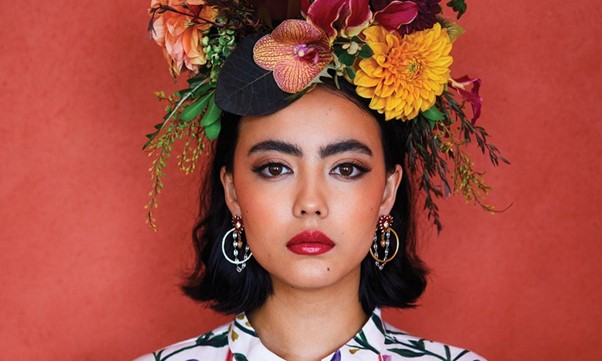
When we think of spring, we tend to think of flowering bulbs and annuals to add big and bold colours. However, there is a wide range of striking foliage plants and natives that can provide the vibrant contrast needed to give your space an excellent pick-me-up after winter.
Red, purple and maroon colours can stand out to great effect when planted among green foliage, creating contrast that will bring out the best from each colour.
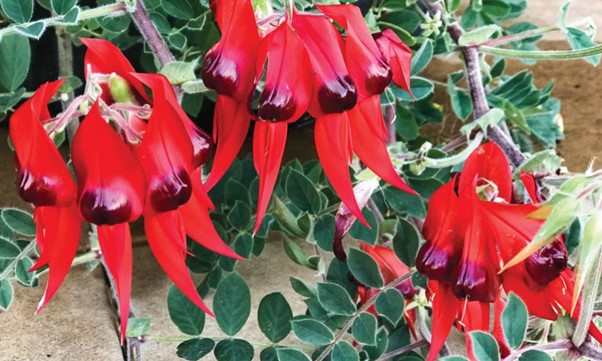
The Sturt’s desert pea (picture Krystal James) is a great ground cover delivering excellent red summer flowers.
With South Australian conditions, natives are a great way to add contrasting red colours and textures. With their deep green foliage and bright crimson highlights, plants such as callistemons, syzygium (big red) and hibiscus tiliaceus rubra can provide brilliant colour changes throughout the year. These plants make great specimen trees and outstanding hedges or screening.
Callistemons, many commonly known as bottlebrushes, come in different varieties and are a very popular native plant, enjoyed not only by gardeners but by Australian wildlife as well. With their deep crimson growth and stunning bottlebrush-like flowers, they are a great addition for attracting native wildlife such as honey eaters, wattle birds and native bees.
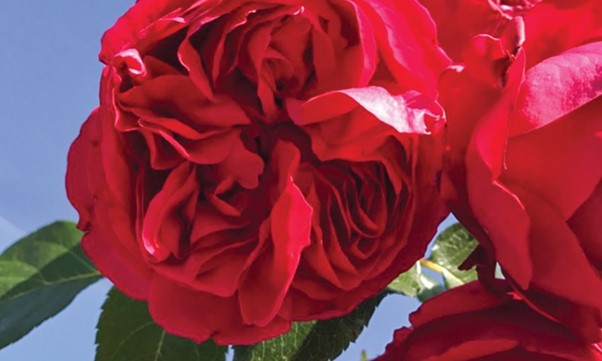
The deep red blooms of the red pierre de ronsard (picture Krystal James).
Callistemons are best grown in full sun and can handle dry conditions. It is best to prune them in late summer or early autumn – after they have finished flowering – to maintain a healthy shape.
The fast-growing big red or tiliaceus rubra are ideal screening plants that will create a dense screen in no time. Spacing is recommended at 75cm apart but they can be planted closer to create a dense look sooner.
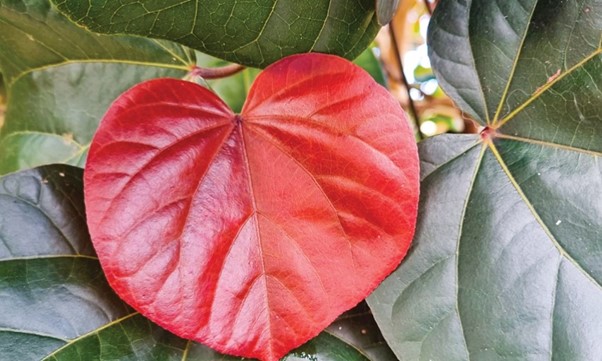
The new leaves of the cottonwood hibiscus (Hibiscus tiliacea) shine a magnificent red.
These plants respond well to regular pruning, which helps them to maintain their dense growth habit and promote flowering. Syzygium make great topiary plants in cottage or modern gardens and also attract native wildlife. They prefer full sun and well-drained soil and can withstand dry periods.
To add extra dimension and texture for borders and ground coverings, plants such as alternanthera (little ruby) and loropetalum (plum gorgeous) are low maintenance with a dense growing habit, adding a striking contrast to your garden all year round. They prefer full sun to part shade, will thrive in most soils and do not like to be over watered. Regular feeding is recommended.
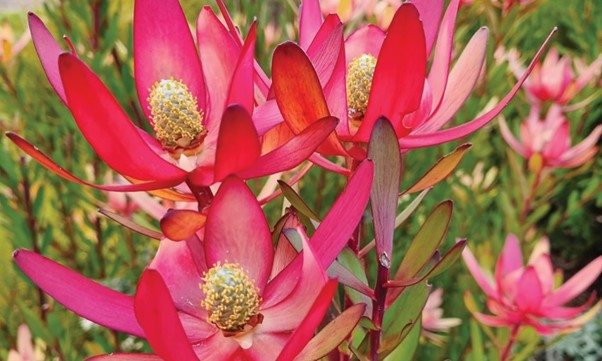
The striking flowers of the Leucadendron safari sunset.
Our floral emblem the Sturt’s desert pea is another great ground cover with excellent summer flowers. Having seasonal flowers to pick not only gives you colour in the garden, but in your home, too.
Leucadendron (safari sunset) is a South African plant that thrives in our temperate climate and produces masses of vibrant red bracts around their flowers. The stems will have an array of vibrant colours year-round and make stunning bunches when teamed up with the silvery, blue, grey foliage of eucalyptus baby blue.
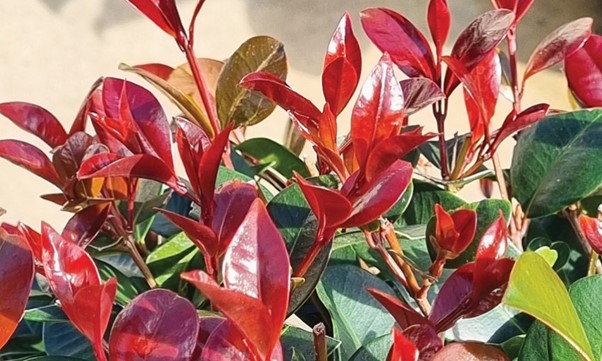
The Syzgium (big red) makes an excellent hedge and delivers distinctive red new growth.
If hedging and shrubs aren’t what you’re after, and you would rather a strappy growth habit, then cordyline (red chocolate) may be the plant for you. Cordylines are known for the fantastic depth they can add to landscapes, especially around pools and in modern gardens to give that feel of the tropics.
Cordylines prefer to live in an area of full sun to light shade which will bring out the best of its colour. The red chocolate variety is a more waterwise variety compared with other cordylines and can also withstand dry periods. Use a weak Seasol solution when planting and water well until established. Also, water during extreme heat and dry conditions. The red chocolate can grow to a height and width of two metres so be sure to choose the right spot in the garden.
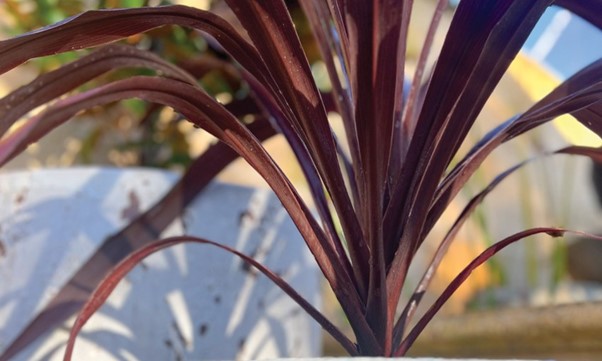
Cordylines grown in pots are another way to inject bold reds into your garden (picture Krystal James).
Climbing plants add impact to a garden, especially ones with vibrant red flowers like Red Pierre de Ronsard or mandevilla (Agathe red) which both prefer full sun and can be planted in pots or in the ground.
Adding red foliage or flowering plants to your garden can create an outstanding contrast of colour and texture throughout all seasons. Talk to your local nursery or garden centre professional for help with which plants would best suit your garden.
This article first appeared in the Spring 2023 issue of SALIFE Gardens and Outdoor Living magazine.
Words: Belinda Millard, Glynde Mitre 10


